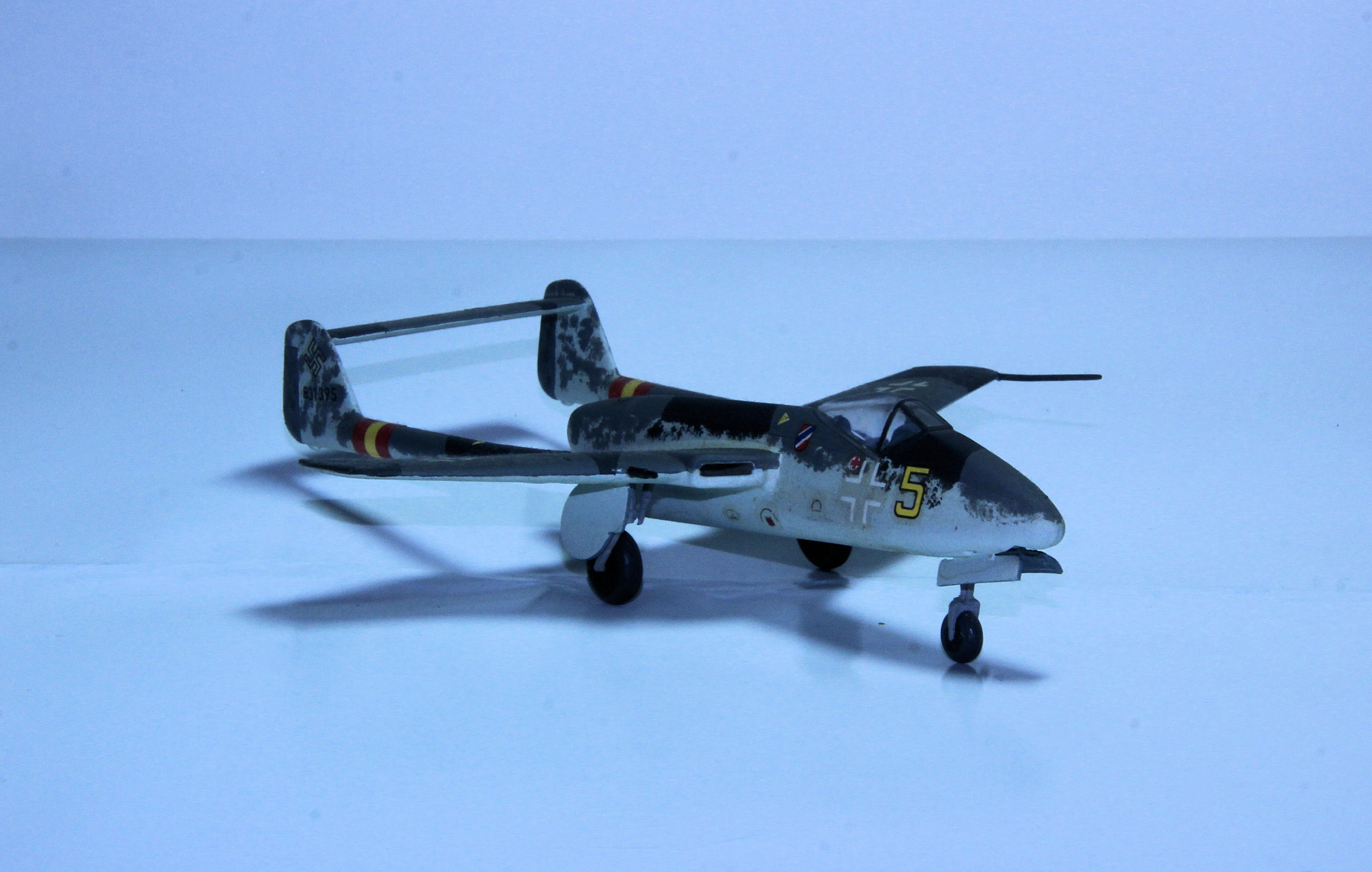Focke-Wulf TL-Jäger Flitzer
The design began as Focke-Wulf Project VI which had a central fuselage and two booms carrying the rear control surfaces, having great similarity with the contemporary de Havilland Vampire.
Project V had the air inlets still positioned on either side of the nose, just below the cockpit.
The estimated horizontal speed was not satisfactory and in the next development, Project VII, the jet intakes were situated in the wing roots. Further improvements over Project VI were a narrower fuselage and a changed pilot’s canopy. In order to improve the rate of climb, a Walter HWK 109-509 hypergolic liquid-propellant rocket was built in to give supplementary thrust. A complete mock-up was built and all construction and assembly plans were finished, but the aircraft was not accepted by the Reich Air Ministry.
Photographs of the wooden mock-up completed toward the end of World War Two can be found here.
General characteristics
- Crew: one pilot
- Length: 10.55 m (34 ft 7 in)
- Wingspan: 8.00 m (26 ft 3 in)
- Height: 2.35 m (7 ft 8 in)
- Wing area: 17.0 m2 (183 ft2)
- Empty weight: 2,730 kg (6,018 lb)
- Gross weight: 4,350 kg (9,589 lb)
- Powerplant: 1 × Heinkel HeS 011 turbojet, 14.7 kN (3,306 lbf) thrust 1 × Walter HWK 109-509 rocket, 16.7 kN (3,750 lbf) thrust
Performance
- Maximum speed: 955 km/h (593 mph)
- Endurance: 1 hours 50 min
- Service ceiling: 13,000 m (42,500 ft)
- Rate of climb: 18.2 m/s (3,600 ft/min)
Armament
- 2 × 30 mm (1.18 in) MK 103 cannon
- 2 × 20 mm MG 151 cannon
Focke-Wulf TL-Jäger Flitzer 1/72 Scale Model by Revell

Focke-Wulf TL-Jäger Flitzer 1/72 Scale Model by Revell 
Focke-Wulf TL-Jäger Flitzer 1/72 Scale Model by Revell 
Focke-Wulf TL-Jäger Flitzer 1/72 Scale Model by Revell 
Focke-Wulf TL-Jäger Flitzer 1/72 Scale Model by Revell 
Focke-Wulf TL-Jäger Flitzer 1/72 Scale Model by Revell 
Focke-Wulf TL-Jäger Flitzer 1/72 Scale Model by Revell 
Focke-Wulf TL-Jäger Flitzer 1/72 Scale Model by Revell 
Focke-Wulf TL-Jäger Flitzer 1/72 Scale Model by Revell
